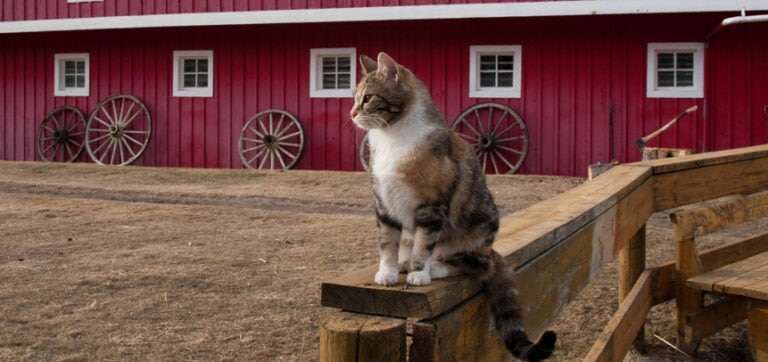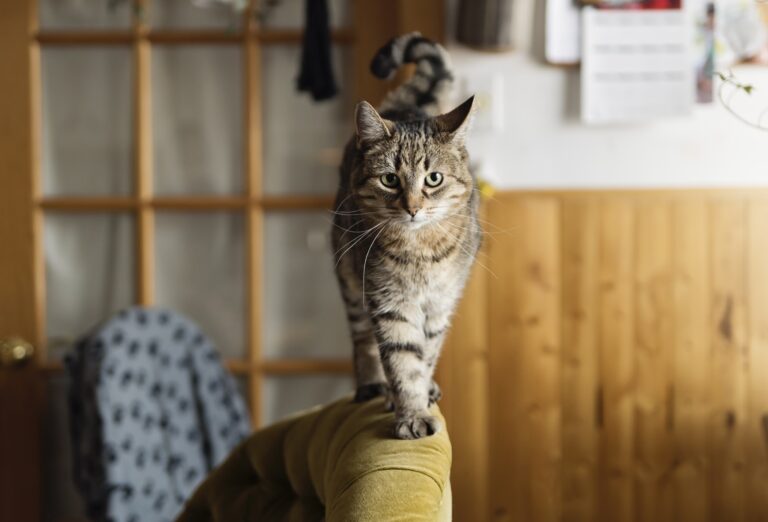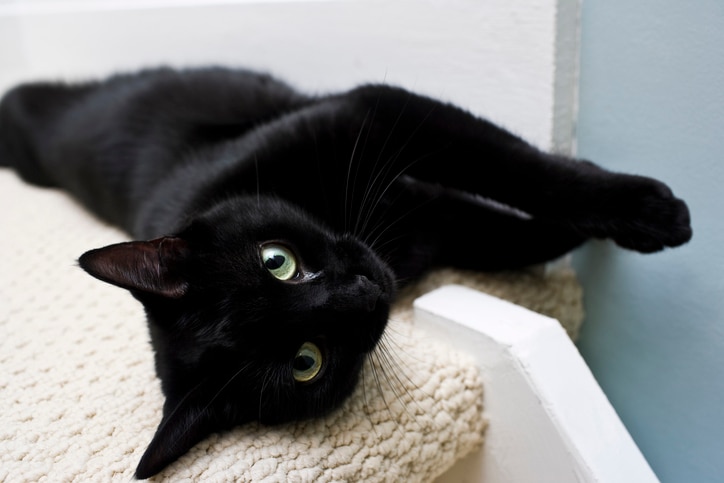Do Cats Really Have Nine Lives?
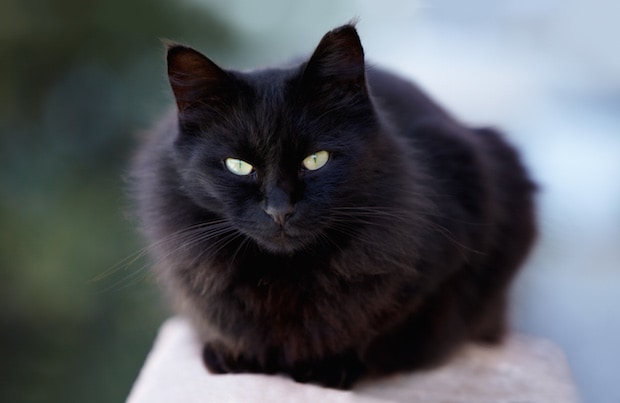
Photo by Chewy
We’ve all heard the saying, “cats have nine lives.” The age-old adage is a phrase that’s been passed down from generation to generation and has served as a permanent fixture in pop culture. But where did the saying come from? And is there any truth behind it? Cats appear to be able to fall from tall ledges and go about their days completely unscathed, but do felines really stand a better chance of survival versus animals of other species?
The Origin of the Saying
Some speculate that the saying has been carried on from an ancient English proverb: “A cat has nine lives. For three he plays, for three he strays and for the last three he stays.” Author Linda Ruggeri says the saying was even used by Shakespeare. “Mercutio gallantly replies to Tybalt in ‘Romeo and Juliet’ with something about taking one of his nine lives,” she says. And the number nine itself has been a mystical number for centuries, Ruggeri says. Greek mythology refers to “The Nine Muses,” who were the daughters of Zeus and Mnemosyne from a love affair between the two that lasted nine months. And the number nine has always been revered as lucky by the Chinese, as it is associated with strength and masculinity. In the Forbidden City, for instance, there are nine rows of nine knobs on many of the doors to convey the impression of power.
Others say that the verbiage dates back to Egyptian times. “Egyptians revered cats and believed they held magical properties,” says Essam Hamed, an Egyptianologist and tour guide in Luxor, Egypt. He says that a popular saying in Egypt is that cats actually have seven lives and jokes that it’s probably the United States that tacked on the two extra lives. “When someone has many car accidents and lives, for instance, we say he is like a cat, as cats have seven lives and never die easily,” he says. Many believe that the saying stemmed from a cat’s ability to survive extreme situations. “I believe that the ability to right themselves during a fall is the main origin of the nine lives idea,” says holistic physical therapist Sally Morgan. “They have flexibility in their bones and ligaments (required for quiet stealth to attack their prey) that helps allow them to sustain minimal injury from many types of accidents.” Dr. Brian Beale, an orthopedic pet surgeon and joint specialist says that, historically, cats have been observed to be able to live through events, like being thrown from tall towers or engulfed in fire, that typically would kill people or other animals.
Can Cats Cheat Death?
While the saying easily rolls off the tongue, Beale says that it’s far from true. “There is actually no scientific evidence to suggest cats have nine lives — as far as we can tell, they have one life on this planet like everyone else,” he says. He does say, however, that nature does give felines some advantages that allow cats to escape from dangerous situations. “They are incredibly intelligent and intuitive. They have lightning-fast reflexes, incredible dexterity, quick decision-making skills,” he says. “Cats have a very flexible spine and they do have the ability to position their body in a protective position in the event of danger.” He also brings up an interesting case that touches on the “righting reflex,” where a cat is able to twist around very quickly in the air to land safely on his feet.
“Dr. Wayne Whitney, a veterinarian at Gulf Coast Veterinary Specialists, reported on the survival rate of cats falling from tall apartment buildings in New York City,” he says. “Because a cat reaches terminal velocity (maximum falling speed), 90 percent of cats survived a fall of greater than two stories. The average fall was five and a half stories.” He adds that, interestingly, the cats that had higher falls had the best chance of survival, likely because they had more time to right themselves to the optimal posture to land with the least impact on their body. “It is interesting to see 90 percent survival — nine out of ten — in the scientific article,” adds Beale.
Given the myth of cats having nine lives, is that just a coincidence?
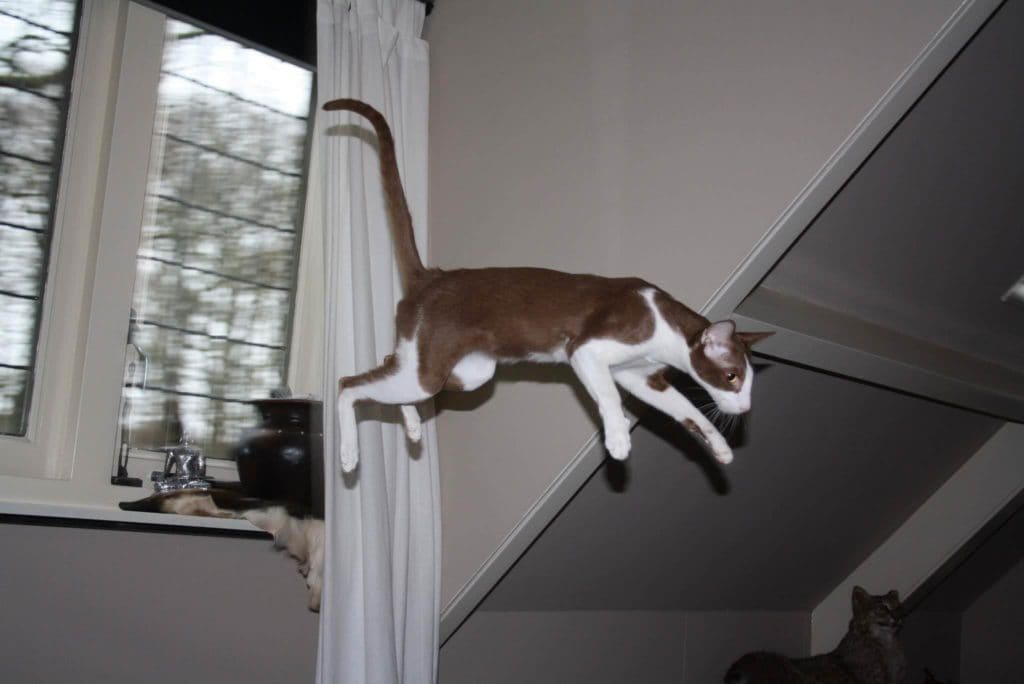
Rikku-an Oriental Cat/Facebook
9 Cat Lifesavers
Samantha Bell, Cat Behavior and Enrichment Lead at Best Friends Animal Society in Los Angeles, agrees that cats have always been surrounded by mystery, maybe partly because they still retain some of their wild instincts. “I think the saying that they have nine lives stems from their ability to land on their feet when they jump or fall combined with their mysterious nature. I’ve read that nine is a mystical number, and thought of as divine in many cultures and religions. And I’ve also heard there is an old English proverb that goes, ‘A cat has nine lives. For three he plays, for three he strays, and for the last three he stays.'” Perhaps if you combine their extraordinary ability to survive falls and quick reflexes that help them cheat death again and again, you’d come to the conclusion that cats really do have nine lives.
1. Landing on All Fours
How is it that a falling cat can land upright most of the time? According to Bell, it’s because they have a “righting reflex” that lets falling cats land on their feet. She explains that “when a cat is in freefall, their inner ear sends a signal for four things to automatically happen as they twist themselves to face downwards: their head turns, their spine rotates, their hindquarters align, and their back arches to cushion the landing and minimize injury.” This amazing ability pretty much ranks as a superpower.
2. Extreme Sense of Balance
Bell explains that like humans, a cat’s excellent sense of balance is controlled by the inner ear, but with a little added help from the tail. In fact, it’s the semi-circular inner ear canals that initiate the “righting reflex” in falling cats. “And cats use their tail as a counterweight to compensate for changes in weight distribution,” says Bell. That’s why they can balance on narrow ledges, up and away from would-be predators.
3. Flexible Spine
If you’ve ever seen your cat propped up against a pillow, in what looks like an impossible yoga pose, in order to clean their nether regions, you’ve witnessed their flexibility firsthand. Being able to clean all parts of their body helps eliminate scents that could be detected by predators, Bell notes. “A cat’s spine is able to rotate more than the spines of other animals (180 degrees either way!), and their vertebrae have flexible cushioning on the disks. This helps them wiggle out of perilous situations with predators (or nail clippers!).”
4. Healing Purrs
The mighty purr of a feline can heal all that ails you—or at least it can help. Cat purrs can not only help heal themselves, but also humans. They’re set to the right frequency that just so happens to be the ideal vibration level for healing. Bell elaborates: “The best frequencies for promoting bone strength are between 25 and 50 Hz, and, since cat purrs are around 20 Hz, those purrs can promote bone strength and healing. Purring can also reduce stress, which in turn will help your blood pressure.” Maybe instead of laughter, cats are actually the best medicine.
5. Free-Floating Bones
This one sounds pretty creepy, but it’s actually really cool. Unlike our rigid body structure, cats have free-floating clavicle bones, so their shoulder blades are attached by muscle instead of bone. Bell explains that this way, cats can squeeze their shoulders together so close that their bodies can slip through spaces no bigger than the size of their heads. On top of that, this feature allows their body to extend further so they can run faster to escape danger.
6. Built-In Motion Sensors
Sometimes it seems like cats have a sixth sense—that they know when someone’s coming. It’s not your imagination. They have biological motion detectors built right in to their seemingly ordinary whiskers. These little sensors are constantly monitoring the air movement to notify a cat if something or someone is approaching.
7. Heightened Senses
Most people talk about a dog’s acute sense of hearing, but it’s felines who truly excel in this category. They can hear higher pitches than even dogs, and are much better at distinguishing between different tones and pitches much better than humans. And while they don’t have great daytime vision, a cat’s night vision is pretty advanced. Their eyes can reflect light to allow more light to reach the retina, which has more light-absorbing rod cells than a human’s retina.
8. Light Feet
You’ve probably watched your cat prepare for a jump and said, there’s no way you’ll make that. But somehow she does, and she does it gracefully. Bell notes that cats can jump from ridiculously tall heights, and they use their tail to control their landings. The average adult cat can jump about five or six times their own height, which is an excellent ability to have when you’re trying to evade some sort of threat.
9. Defense Mechanisms
When all else fails, and there’s no escape route, a cat can always “use their extremely sharp claws and teeth to defend themselves and get away,” Bell points out. Made for climbing and snagging prey, the mighty cat claw can also help ward off other animals. Their teeth can become pretty threatening weapons, too!
Nicole Pajer contributed to this story.




